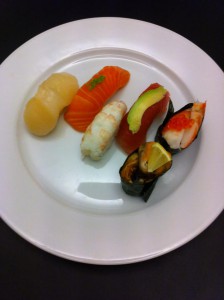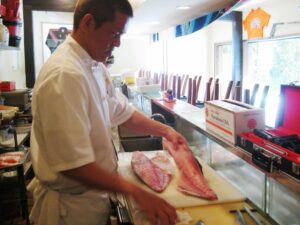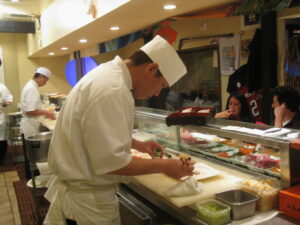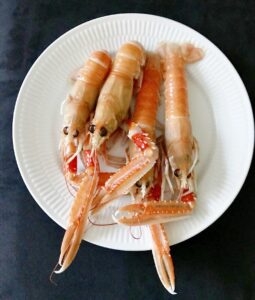An adult tuna weighs 225-250 kilos. Just like on other animals, the quality of the meat is different depending on where on the animal it sits.
Tuna meat from the stomach is called toro. It is fatter than meat from other places on the animal. In Japan, toro is an exclusive and expensive piece, which is full of flavor and umami. The meat is pink in color it is a piece used to make nigiri sushi.
Along the backbone of the tuna sits lean tuna, which is called Akama. The flesh is very red in color and the taste is similar to beef. In Japan, it is used for both nigiri and sashimi.
Then of course there are many other cuts where the fat content and taste are different. No two tuna are alike, so the quality and taste will vary from fish to fish.
In Europe, the selection of tuna cuts is not that big. The fishmongers sell one type of tuna cut that is often suitable both for sushi and for a delicious steak to be on the grill.
At the Sushi course for beginners, you will learn more fish for sushi.
_
Zoë has lectured and held sushi courses for A. P. Moller – Maersk, Hugo Boss Nordic, Novo Nordisk, Novartis, Velux, Gorrissen Federspiel, Beierholm revision, Elbek & Vejrup and many more.









